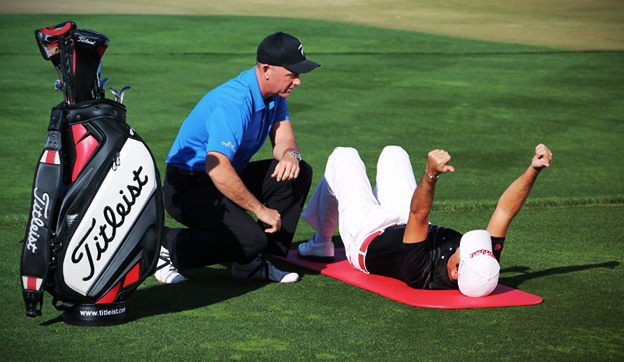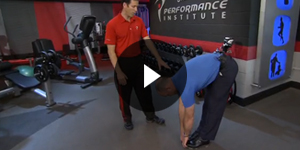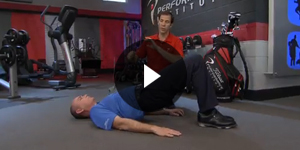IMPROVE MY GAME
Articles
When to Come Back?

To get back in the game, ramp it up slowly!
In our last article, we looked at when common sense would dictate the need to "shut it down" with an injury. Now we will consider when it’s appropriate to return to action. There are many different issues to consider such as age, prior injuries, the type of injury and the significance of the pending competition. In the golf industry, we speak of the “money parts.” These are key areas which when injured, can change careers. They include the spine, the wrist, the shoulder, the knee, the hip and the ankle.
The majority of problems in golf are related to the repetitive nature of the game. Besides hours of practicing, there are many mundane activities such as climbing in and out of bunkers, carrying bags, and placing tees in the ground, that take a toll on a golfer’s body.
Another issue is the unfortunate result of the elaborate conditioning programs now being utilized by players. With the great benefits of training comes the inherent risk of certain cross training techniques. A short list of our red flag exercises would include the inclined leg press, the overhead shoulder press, any sustained lumbar flexion as in a prolonged posterior pelvic tilt and any unsupervised Olympic lifts such as the dead lift! The reason a certified trainer is such an integral part of a golfer’s team is the attention to detail and understanding of safe, efficient technique.
Faulty alignment and postural patterns certainly predispose all of us to strains and sprains. These patterns are shaped by the things we perform every day as a routine part of our lives like sitting, driving, and using a computer. We develop habitual movements and we adapt accordingly to the ever-present effects of gravity. If we then take these abnormal postural patterns to the golf course, potential problems may arise.
It is important to never use the presence or absence of pain as the only determining factor in whether or not to return to action. In the clinical setting, we see pain arise as a final warning and often see it disappear before all is truly well. Of course, some injuries are acute and traumatic in nature. The solution is to observe functional movements and assess an individual's ability to tolerate a level of stress consistent with the golf swing and, more importantly, 18 holes of golf.
Rules of engagement
The following outline would be appropriate for a simple disc bulge of the lower back or significant sprain/strain of the spine. We must always customize our approach based on each individual’s reactions and tolerance.
It should be noted that injury recovery is often described in three phases:
- Inflammation (first week)
- Proliferation or repair phase (day three through 3 weeks)
- Remodeling (beyond 10 days)
The duration of each phase varies between individuals and the phases may have some overlap. This is where traditional exercise therapies and training techniques along with manual therapies need to accommodate the individual’s response. Disc injuries may be aggravated by inappropriate therapies and premature aggressive motion! There is no cookie cutter approach to this area of rehab. In the hands of skilled professionals, progress will be made but setbacks can be anticipated. There is an art to being able to make these decisions and the player is best to comply at all times.
Under the guidance of your doctors and trainers, it is prudent that the following basic screens are performed pain-free before allowing a player to think about swinging a club:

Pelvic Tilt Test

Pelvic Rotation Test

Multi Segmental Rotation

Toe Touch

Multi Segmental Extension

Single Leg Balance

Bridge with leg Extension
In addition to these screens, a player should be able to perform the following:
- The player must be able to “static hold” all positions of swing (set up, top of backswing, impact and follow through) as well as perform super slow swings without pain.
- The player must be able to maintain putting and chipping postures without pain for twenty to thirty seconds at a time for a minimum of three sets.
If the player is able to pass the physical screens without pain, he can now resume chipping. If the following day is without consequences, we begin full shots with a 7 iron. If no adverse reaction, the following day the player moves through the bag with caution. Pay close attention to the player’s physical response to the first practice session and be aware of any sense of aggravation. Always ice first and rest in a stable back position after initial return. Following a round, always perform a cool down routine involving dynamic stretching and recovery positions to relax the back.
This is meant to be a generic guideline, which needs to be customized and monitored at each step. Returning to competition brings with it more complex issues than merely being free of pain. More severe cases will be adjusted for the progression to full swings based on a 48-hour recovery period. Remember that the full affects of some injuries take up to 72 hours to be fully realized and any aggravation of an injury further worsens long-term prognosis.
One of the most common reasons for an injury is the improper handling of an initial problem!

Dr. Peter Mackay
As a board-certified chiropractor in the State of California, a Qualified Medical Evaluator, and founding member of the Titleist Performance Institute (TPI) Advisory Board, Dr. Peter Mackay has an extensive career in sports injuries, industrial medicine, and physical rehabilitation.
